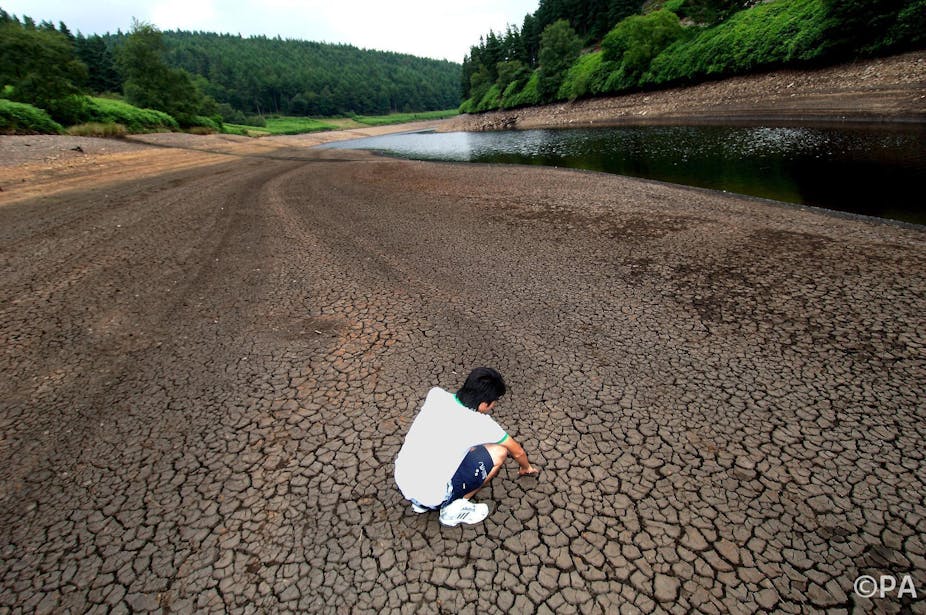Following the wettest winter for 250 years, it would seem fair to assume that drought-induced food shortages are unlikely to be a problem for Britain.
But in the near future we may find that water is a factor in shortages of commodities we rely on, such as crops, meat, fish, fuels, pharmaceuticals and paper – the shortages of water and land are not in Britain, but elsewhere.
In recent research with colleagues from Loughborough University published in the journal Climate Research, we examined the international dimension of how commodities are supplied to import-dependent countries, such as the UK. Increasingly, understanding the impact of climate change on a global scale is critical when considering the impact on supply chains and the availability of commodities in the future.
The UK is among the most dependent nations on imports from overseas. The role of international trade and access to water in other countries is essential if the people of Britain are to continue to access the range of commodities they currently enjoy.
Our work looked at 25 of Britain’s most economically significant and climate-sensitive imports, examining the amount of water needed to produce these goods. Based on 2010 figures, these 25 products represented 30% of Britain’s imports and required 12.8 billion cubic metres of water.
We found that rearing beef cattle, and manufacturing plastics and paper require the most water of all UK imports, closely followed by growing rice, wheat and rearing pork.
We compared the overall water requirements for these imported commodities with projected change up to 2040. This included climate-related changes and economic changes such as increased demand or a growing population.
Data from the United Nations Environment Programme has revealed that many of the countries Britain relies on for imported commodities already suffer from absolute water scarcity, specifically those in North Africa and the Middle East. There are also a number of countries that are under relative “water stress”, notably the large growing economies of China and India, Eastern and Southern Africa, as well as Poland and Denmark.
Population size will be a major factor in determining how hard global water shortages will hit. UN data suggests that the current upward trend in the world’s population will continue until at least 2030. The medium projected population is 8.9 billion by 2050, an increase of 28% on 2012, and this will cause new regions to experience water stress over the coming decade.
The study has given us some insight into where the water-related weak links are among Britain’s imports, and so how secure the country’s supplies may be in the future. We now have a clearer picture of how Britain will become increasingly susceptible to the lack of water in other nations – even as our own is drenched in excess.
Reducing water use, and risk
Britain’s national water footprint and import dependency are relatively high, even without considering any effects of climate change and population growth. Without introducing water-saving and efficiency measures, or by making environmental compromises, there is little scope for producing at home those highly water-dependent goods we currently import, unless prices rise.
But countries dependent on climate-sensitive imports can invest in improved production methods and efficiency improvements in exporting nations that would reduce water use.
For example, India and Pakistan are the largest exporters of rice to Britain. But compared to the world’s second largest rice exporter, Thailand, they are inefficient when it comes to water. Investment, education, improved manufacturing processes and agricultural technologies and greater emphasis on water management will be important to secure rice supplies in the future.
Improving trade relations with other nations that could potentially supply Britain’s needs is also important, especially those countries where the effects of climate change are likely to be less severe.
These findings have national implications for politicians – the risks to water supply in the UK posed by climate change will need to be managed alongside other, better understood, factors driving water demand such as trade, population, consumer behaviour, dietary trends, agriculture and the environment.

